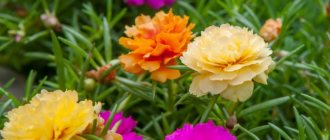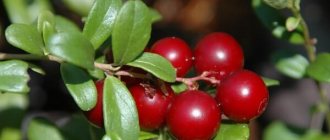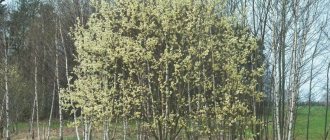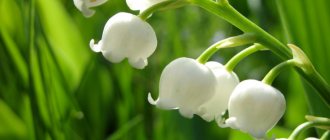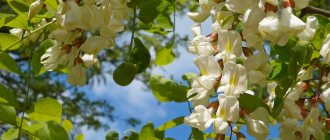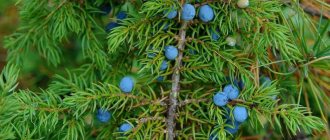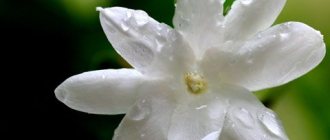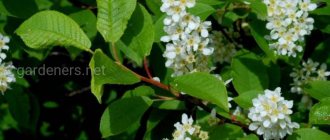- September 24, 2018
- Wild plants
- Natalia Penchkovskaya
Feather grass (a photo of the plant is presented in the article) is a perennial grass that is not found on black soil. She has chosen steppe, mountain and semi-desert lands located in zones with a temperate climate. In different areas, this grass is called differently. You can find the following names: feather grass, kipets, hairs, Maryin flax, sheep's death, love, whistle, pernik, thyrsa, stepchina, silk grass.
There are quite a few varieties of the feather grass plant, the photo of which is posted in the article. Some sources indicate between 300 and 400 species. In appearance they are very similar to each other. This is a tall grass with a short and non-creeping rhizome. The stems rise above the ground to a height of 30 to 80 cm. They resemble thick turf with straight stems and hard leaves that look like plates.
In the article we will look at a description of the feather grass plant with a photo, where you can find such grass, where it is used, and whether it is suitable for animal feed. We will also figure out how to grow this plant for landscape design and what its features are. Some of the medicinal properties of the herb are used for medicinal purposes, and for which diseases, you will learn from the article.
Description of the plant
This perennial grass looks impressive, so it is often used to decorate areas. The inflorescences are represented by panicles and lush spikelets, each having one flower with two covering scales. The hard leaves look like wire, twisted at the base into a tube.
The spikelets tightly cover the grains until they ripen, and subsequently the spine falls off. The leaves of the feather grass plant are rolled into tubes, but flat varieties can often be found. When flowering, large spikelets are formed, collected in panicles of several pieces. This happens in May or early June. However, you should not wait for flowering in the first or even second year after planting. Steppe feather grass begins to bloom intensively in the 3rd, or less often, 4th year after planting.
Application in landscape design
Feather grass in landscape design
Feather grass looks quite impressive in appearance, so with its help you can create beautiful and lush compositions that imitate natural steppes. Usually the plant is planted in dense groups. Together with it, those herbs that look harmonious are grown, as a rule, these are cereal crops.
Feather grass is planted next to ponds along with sedge, reeds, and irises. Such herbs make the environment of the reservoir more natural and natural. It is also planted next to fences.
Features of the plant
An interesting phenomenon can be observed after dark in the fields where feather grass grows. As the night cools, dew falls on the leaves, and the lower part of the plant, which was previously curled into a tube, begins to straighten. This presses the feather grass to the surface of the ground. In this case, the panicle with grains simply lies on the ground, clinging to the protrusions with prickly bristles.
When the sun rises, the dew evaporates and the stem takes on its normal shape. The grass straightens out again, but some of the grain remains on the ground, germinating after the next rain.
Contraindications
People prone to allergies should be careful when handling feather grass changes. They can cause an attack of suffocation and asthma. Even a harmless bouquet of dried flowers, which contains this cereal plant, can be a source of exacerbation of the disease. It is recommended that pregnant and lactating women avoid using products based on this cereal. When preparing medicines based on horse tail, it is necessary to strictly observe the proportions to avoid poisoning, which manifests itself in the form of nausea, dizziness, abdominal cramps and a feeling of weakness. Before treatment, you should consult a doctor.
Where does feather grass grow?
Photos of feather grass can often be seen in popular magazines, as it is a very beautiful plant in appearance. It can be found throughout Western Europe, the virgin steppes of Russia - in the southern regions and Siberia.
A lot of steppe feather grass (photo below in the article) is found in the endless fields of Ukraine. Perennial grass is especially common in the Kherson region. In the Askania-Nova Nature Reserve you can take wonderful photos of the feather grass plant, especially at the beginning of summer, when the fluffy panicles flutter in the wind.
Also, a lot of this grass grows in the protected Khomutovskaya steppe, located in the Donetsk region of Ukraine. In Western Europe, Hungary and the dry fields of Spain are especially rich in feather grass. Some varieties can be found in the Gobi steppe, in countries close to the Caspian and Azov seas. Feather grass grows abundantly in Algeria and Morocco. The giant species can be admired in the lands of the Iberian Peninsula and in the countries of North Africa.
Harm from a large amount of feather grass
Agricultural workers consider grass a weed and try to get rid of large quantities of it. This attitude is caused by the fact that feather grass, firstly, does not participate in the formation of the chernozem soil layer, and secondly, after the end of the growing season, fungi begin to actively develop in the roots of the plant, which release acidic enzymes into the soil. This prevents other grasses from growing, especially after a dry summer.
A large number of feather grass in meadows leads to an environmental disaster, because other grasses often cannot withstand drought, which gives it a great advantage. The feather grass begins to actively spread, thereby killing other plants. People have been fighting this dominance for many years, planting more valuable perennial grasses, watering dry lands in meadows, giving the opportunity to grow not only feather grass, but also other types of plants.
Often there is a hobbling of the steppes after the late fall of the grass. Such areas of the steppe quickly become overgrown with feather grass and annual weeds. Agricultural workers have to fight the weed with all known methods.
Feed value
Feather grass, a photo of which you can see in the article, is also used as a fodder crop. However, only some species of this plant are suitable for grazing livestock. Feather grass is collected for such purposes before it blooms, when the stems have not yet become coarse. To feed horses and sheep, feather grass is mixed with other herbs and only then given to livestock to eat. This type of grass is not fed to cattle due to its low nutritional value compared to other perennial grasses of our steppes.
Signs associated with feather grass
Since ancient times, feather grass has been considered a widow's grass. If a woman brought it home, it meant that she would soon become a widow. This was connected with the attack of nomads on villages and cities, killing all males. These raids coincided with the flowering of feather grass. It was believed that the spikelets of this cereal resembled the gray hair of widows.
There is also a good sign associated with this plant. Several centuries ago, people considered feather grass to be an unusual plant that could protect against trouble. It was believed that this grass belonged to the spirits of the steppe. And they kept a small bunch of feather grass under their clothes as a talisman.
Decoration of personal plots
A photo of feather grass demonstrates its value as an ornamental crop, which is often used by landscape designers in the design of plots of land or alpine hills. You can plant grass as early as April or May; some people plant in the fall, believing that this way the seedlings will appear faster and be more resistant to damage.
There are two methods of planting - in open ground and with seedlings germinated indoors in pots. In the first case, a hole 3 cm deep is dug at intervals of 20 cm from one another. It is filled with water and seeds are placed, which are simply sprinkled with a layer of soil. You can lightly press the powder deeper with your hands.
When decorating the paths around the house, you can mulch the soil between planting feather grass, namely, sprinkle the soil with expanded clay or small crushed stones.
If you want to grow seedlings, then make a hole in each pot, pour a little water and place 3-4 grains of feather grass (pictured).
There is no need to press the seeds into the ground, just sprinkle 1 cm of soil on top of the crops. You can additionally moisten the soil with a spray bottle. Planting of seedlings begins in March, and after a month you can plant the plants in open ground. For such purposes, choose dry and not too fertile areas of land that will not be flooded after rain, since feather grass is incredibly sensitive to excess moisture. In Soviet times, by watering meadows they got rid of such grass, thereby destroying huge quantities of it in nature.
Caring for crops is incredibly easy, because feather grass is very resistant to diseases and various pests. Even if neighboring plantings are infected with fungi, the feather grass will be the last to take over the disease. But it is not recommended to bring the grass to this state, since fungi release acid into the soil, which increases the acidity of the soil and harms other plants.
The plant in the area near the house looks incredibly beautiful, as evidenced by the photo of feather grass above. And in dry summers, you don’t have to constantly water the area in order to admire the lush vegetation around you.
Medicinal properties
In folk medicine, decoctions and tinctures of various roots and herbs are often used. Folk healers also paid attention to feather grass, having discovered its effectiveness in the treatment of such unpleasant diseases as paralysis, multiple sclerosis and rheumatism, as well as diseases of the thyroid gland.
For treatment at home, it is best to purchase ready-made dried feather grass in pharmacies across the country, but if you decide to prepare the material yourself, then you need to know some features. The grass is collected in May-June, that is, before flowering. Cirrus awns have the best medicinal effect.
The leaves of the plant are also useful. The harvested raw materials are dried in the shade. The room where drying occurs must be well ventilated. Then the dry plant is crushed and stored in paper bags until use.
Procurement of raw materials
To prepare traditional medicine, the above-ground part of feather grass, that is, its stems, leaves, and flowers, is used. Collection is carried out at the end of spring or at the beginning of summer.
The necessary parts are cut off and sent to a well-ventilated area for further drying. The place where the grass is dried should not be exposed to direct sunlight or moisture.
To store raw materials, containers made of paper, fabric or cardboard are used. Before packaging into containers, it is recommended to immediately grind the plant, since this will still have to be done before making any folk medicine. The shelf life is 2 years.
The roots are rarely used for medicinal purposes, but such recipes do occur. For harvesting, they are dug up in the fall and dried in the same way as above-ground parts.
Popular recipes
- To treat an enlarged thyroid gland (goiter), make a milk decoction from a glass of milk and 2 tsp. chopped grass. It is necessary to boil for 5 minutes, and then let it brew for half an hour. You need to drink the decoction in small sips throughout the day. It can also be used as a lotion on enlarged glands.
- To get rid of paralysis, the following collection is used: combine feather grass and Echinops seeds in equal parts. Then mix thoroughly and take 2 teaspoons of the mixture, pour a glass of boiling water, cover with a lid, leave to settle, wrapping the container in a warm scarf. It's better to do this at night. It is most convenient to use a thermos. In the morning, the infusion is filtered through cheesecloth and drunk in small sips throughout the day.
Now you know a lot of information about feather grass, which is not only visually beautiful, but also useful for medicinal purposes.


